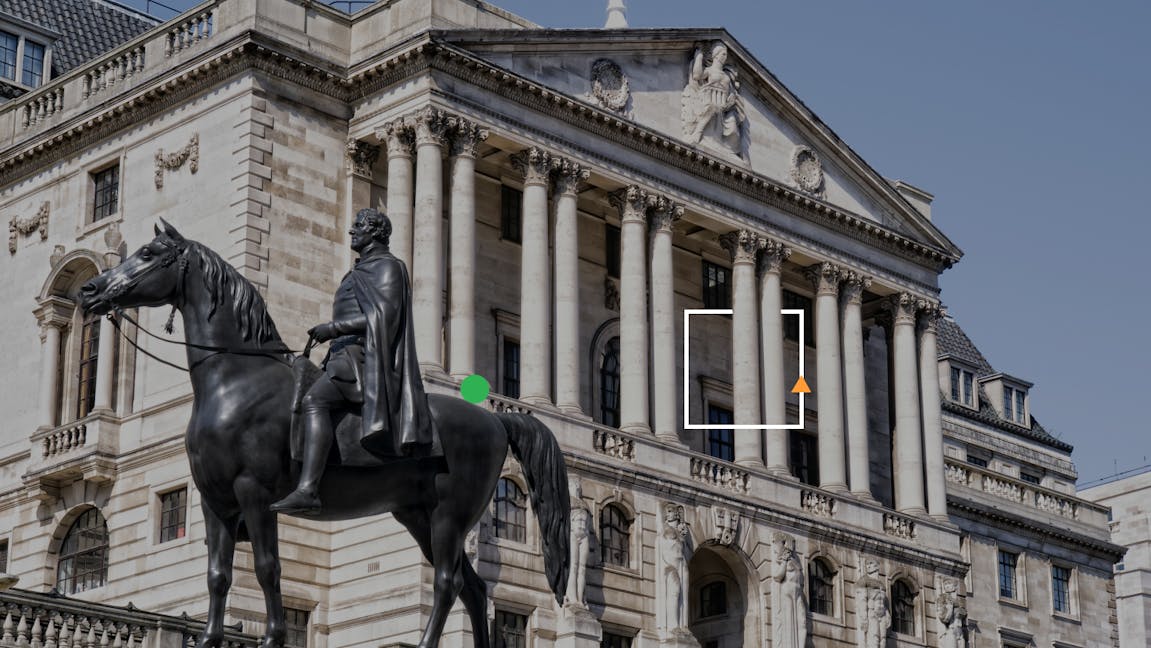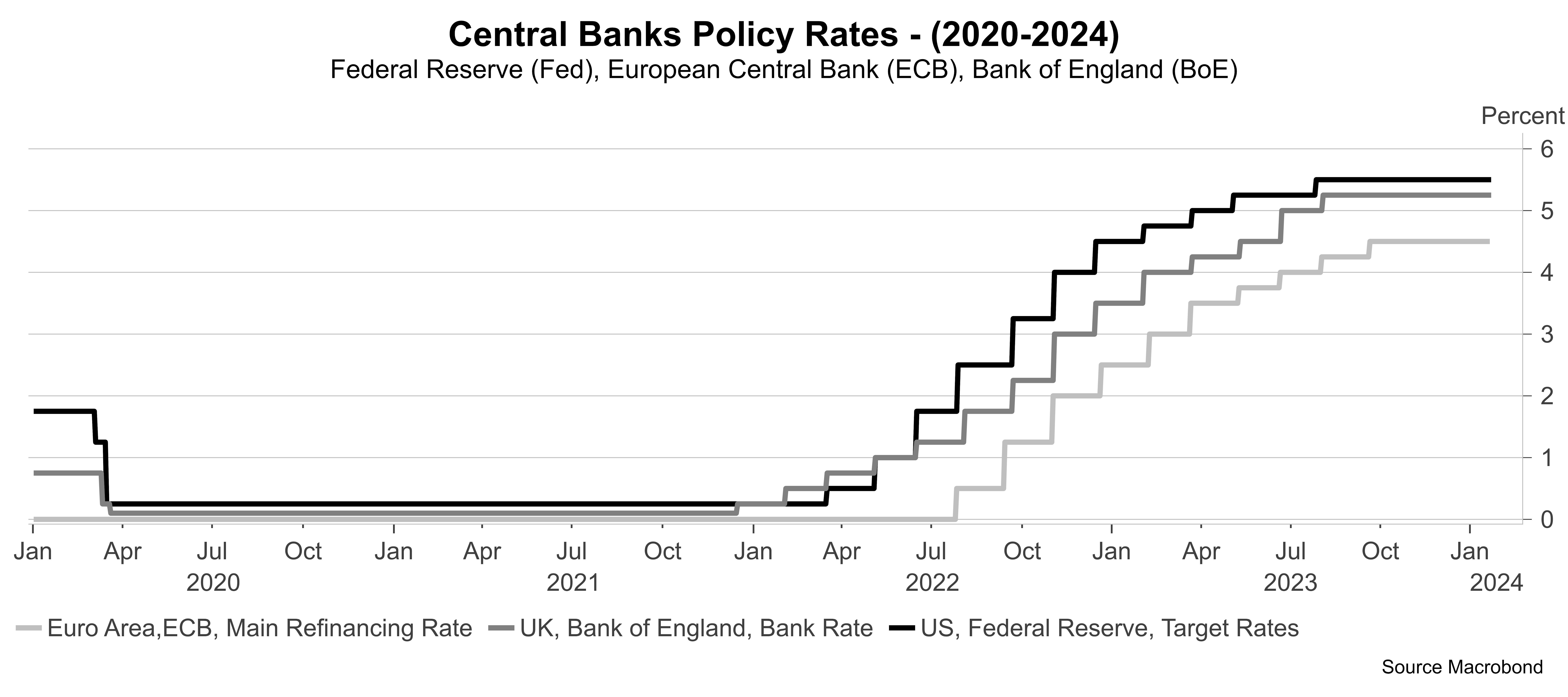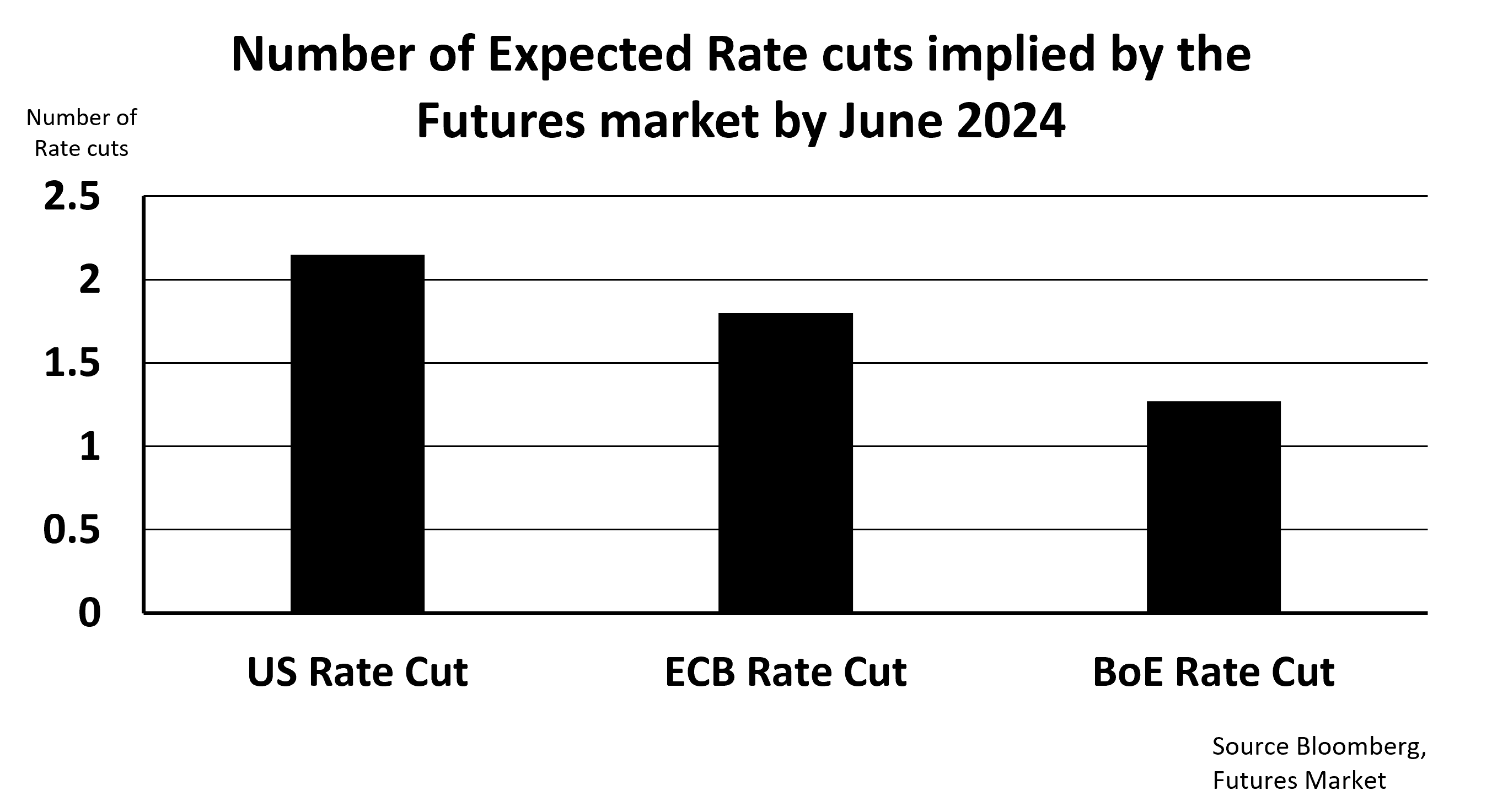
Following an extraordinary rate-hiking cycle, interest rates look set to be lowered in 2024. We explore what this could mean for investors in the months ahead.
Could central banks cut interest rates in 2024?
Over the last two years, the world's major central banks have been aggressively hiking interest rates to try and bring inflation under control.
Following the initial interest rate hike by the Bank of England on December 13, 2021, the Bank went on to raise its base rate 13 more times, resulting in a cumulative increase of 5.15% (initially at 0.1% and currently at 5.25%).
Similarly, in the US, the Federal Reserve has raised the target rate 11 times since March 2022, from 0%-0.25% to 5.25%-5.5%. The European Central Bank has increased rates 10 times, from 0% to 4.5%, starting in July 2022.
After a pause of over four months, attention is now focused on the chance of rate cuts and when such actions might occur. So, where do we stand today?
With global inflation now subsiding, the primary rationale for maintaining elevated rates is diminishing. This has led to optimism about the prospect of potential rate cuts. Policymakers appear to support this trend, with the Federal Reserve's board committee members anticipating lower interest rates in 2024 in their latest projections. Futures markets (where investors can speculate on the direction of interest rates) have reflected significant expectations for rate cuts this year.
Chart 1: Central bank policy rates, 2020-2024

Central banks may start cutting rates at different points
Among the three central banks discussed, situations differ, despite some similarities. The Federal Reserve is in the best position regarding inflation, which has been consistently trending down since September 2022. Members of the Federal Reserve have, in our opinion, been in agreement on where they see interest rates in 2024, with the possibility of a decline from the second or third quarter of the year.
Conversely, the UK faces a slightly more challenging situation regarding inflation. Not only did it peak higher, but the reversal started later than other regions and remains relatively elevated. Adding to the complexity, inflation began rising again in December, though this might be only temporary.
In the eurozone, the situation falls between that of the US and the UK. While inflation there peaked six months after the US, it has decreased substantially since then. Speculation even suggests that the European Central Bank might be the first to cut rates, acknowledging that inflation in the eurozone is no longer a significant threat with a steeper decline than other regions.
Chart 2: Eurozone, UK and US core inflation (excluding food and energy) vs 2% target, 2020-2023

Why is there uncertainty surrounding interest rate cuts?
Generally speaking, markets are quite optimistic in expectation of rate cuts. Although inflation remains a major influencer of monetary policy, it is not the sole factor. The potential output growth of a country (GDP) is also fundamental. In the US, where inflation is decreasing, economic growth was surprisingly robust throughout 2023. If this trend continues in 2024, the Federal Reserve may be less inclined to rapidly cut rates, in order to avoid the risk of the economy growing too fast and inflation returning.
In the European Union, despite inflation currently being higher than in the US, the economy appears to our view more vulnerable, leading to speculation that the European Central Bank could be the first to implement rate cuts.
Last but not least, the Bank of England finds itself in a more nuanced position. While GDP growth is expected to be modestly positive, supporting the likelihood of an early rate cut, inflation needs to decrease for this to be feasible, and this hasn't been the case recently. In the last Monetary Policy Committee meeting in December, three out of nine members voted for a rate increase. This is worth considering as the market contemplates the possibility of the first rate cut in March 2024.
Chart 3: Futures market expectations for number of central bank rate cuts by June

Figures represent aggregated expectations of the futures market: for instance, 2.1 US Rate Cuts implies the majority thinks the US will cut rates twice, while a small minority thinks they'll cut rates more than that.
Why are interest rate cuts so significant for markets?
The potential for rate cuts across developed regions after a period of rapid rate increases is a significant shift that should not be underestimated. Maintaining interest rate policy at a restrictive level for an extended period increases the risk of a recession, which in turn can impact investment returns.
In the US, for example, during the tougher times of economic recession, projected returns on risky assets like equities tend to be negative. In contrast, during periods of economic growth and decelerating inflation, projected returns can be in positive double digits.
Therefore, the potential for rate cuts – which can significantly reduce the risk of a recession in the short-term – is of utmost importance to investors. This shift was a driving force for markets in the last three months of 2023, and if these cuts, even modest, materialise, especially in the US, it could continue to be a positive driver for equities and risky assets in general.
1, Fed Summary of Economic Projection - https://www.federalreserve.gov/monetarypolicy/files/fomcprojtabl20231213.pdf
Risk warning
As with all investing, your capital is at risk. The value of your portfolio with Nutmeg can go down as well as up and you may get back less than you invest. Past performance and simulated past performance are not a reliable indicator of future performance. Forecasts are not a reliable indicator of future performance.
